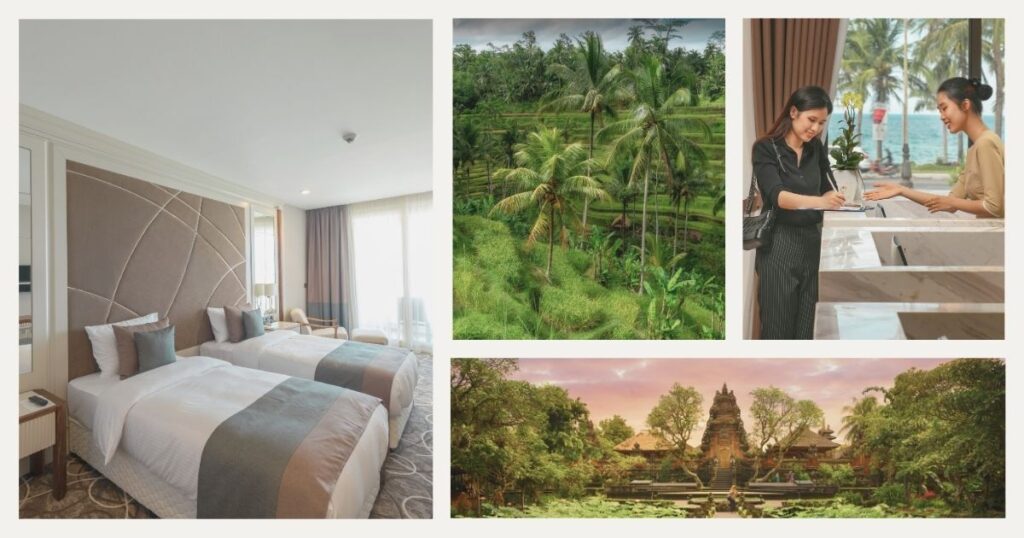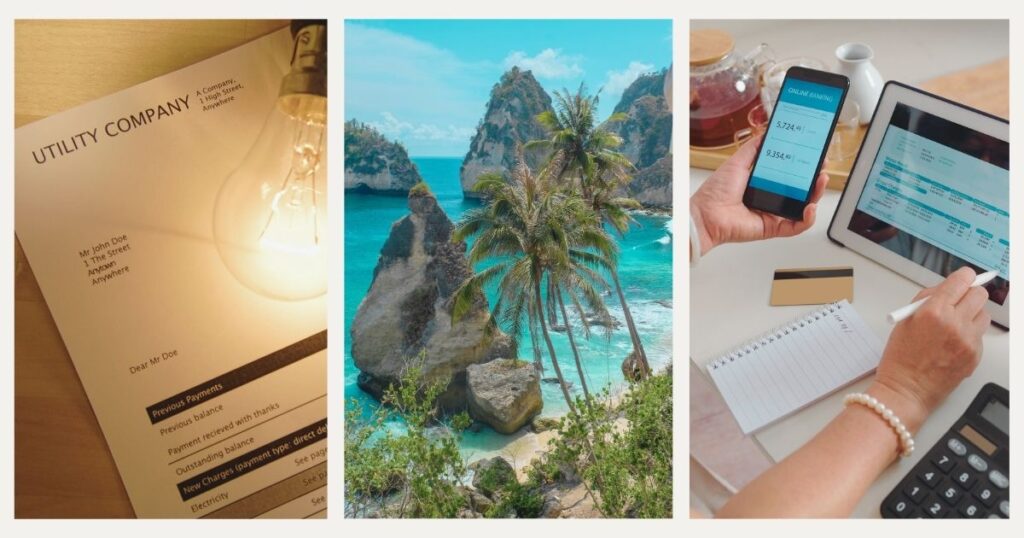Bali has earned its reputation as one of the world’s most affordable tropical paradises, where Western salaries stretch significantly further than in most developed countries. But understanding the true cost of living in Bali requires looking beyond surface-level prices to examine the nuanced reality of daily expenses, lifestyle choices, and regional variations that can dramatically impact your monthly budget.
From bustling Canggu co-working spaces to serene Ubud rice terraces, different areas of the island offer vastly different price points and lifestyle experiences. Whether you’re planning a short-term adventure or considering a long-term move, this comprehensive breakdown reveals exactly what you can expect to spend across all major expense categories.
Smart budgeting in Bali involves understanding local pricing structures, seasonal fluctuations, and the dramatic differences between tourist-focused establishments and authentic local alternatives. With proper planning, you can live comfortably on a modest budget while still enjoying the island’s incredible food, culture, and natural beauty.
Accommodation costs across different areas

Housing represents the largest expense category for most expats and digital nomads, with dramatic price variations depending on location, amenities, and accommodation type.
💡 Did you know? The cost of living in Bali can vary by up to 300% between tourist hotspots and local neighborhoods, often within just a few kilometers of each other. Choosing accommodation slightly outside prime areas can provide substantial savings while maintaining easy access to attractions.
Budget to mid-range options
Shared accommodation in popular areas like Canggu or Seminyak ranges from $200-400 USD per month, including utilities and often access to pools and co-working spaces. These arrangements provide excellent value for digital nomads seeking community.
Private rooms in guesthouses cost $300-600 USD monthly in tourist areas, dropping to $150-300 USD in local neighborhoods. Basic apartments and studios in residential areas start around $250-500 USD per month, with utilities adding $30-50 USD monthly.
Modern one-bedroom apartments in popular areas range from $600-1,200 USD monthly, featuring contemporary amenities, reliable internet, and often swimming pools. These properties cater to remote workers requiring professional environments.
🌟 Pro tip: maintain reliable communication with landlords using comprehensive connectivity solutions that ensure seamless coordination for viewings, contract negotiations, and ongoing property management throughout your stay.
Location impact on pricing
Central Seminyak and Ubud command premium prices due to tourist demand. Expect to pay 50-100% more for equivalent accommodation compared to the surrounding areas.
Emerging neighborhoods like Pererenan, Bingin, and East Ubud offer modern accommodations at 30-50% savings while maintaining reasonable access to popular areas through scooter transportation.
Food and dining expenses
Food costs vary dramatically based on dining preferences, with local options providing exceptional value while international cuisine commands premium prices.
Local dining options
Traditional warungs serve authentic Indonesian meals for $1-3 USD, providing generous portions of rice, vegetables, and protein. Street food and local markets provide snacks for $0.50-2 USD, including nasi goreng, mie ayam, and fresh fruits.
Local restaurants serving Indonesian cuisine typically charge $3-7 USD for substantial meals, offering comfortable dining environments while maintaining authentic pricing.
International and tourist dining
Western restaurants and cafes charge $8-20 USD for main courses, catering to international tastes with familiar ingredients. Upscale dining and resort restaurants command $20-50 USD per person, offering fine dining experiences with imported ingredients.
The cost of living in Bali becomes significantly higher when consistently choosing international dining options, potentially doubling or tripling food expenses compared to local alternatives.
Grocery shopping and cooking
Local markets provide fresh produce at exceptional prices, with weekly grocery budgets of $20-40 USD sufficient for home cooking. Supermarkets charge premium prices for imported goods, with weekly budgets of $50-100 USD typical for Western brands.
Cooking at home can reduce food costs by 60-80% compared to restaurant dining, particularly beneficial for longer stays and those with specific dietary requirements.
Transportation and mobility costs
Getting around Bali involves various transportation options, each with distinct cost structures and practical considerations.
Scooter rental and ownership
Monthly scooter rentals range from $40-80 USD, including insurance, providing maximum flexibility for exploring the island. Daily fuel costs typically range from $2-4 USD, depending on usage patterns.
Purchasing a used scooter costs $800-2,000 USD, making it economical for stays exceeding six months. Registration, insurance, and maintenance add approximately $20-40 USD monthly.
Alternative transportation
Ojek (motorcycle taxis) charge $1-3 USD for short trips, providing convenient transportation without vehicle ownership responsibilities. Taxis and ride-sharing services cost $5-15 USD for typical journeys between popular areas.
Inter-city buses provide economical travel for $3-8 USD, while domestic flights between Indonesian islands range from $50-150 USD for exploring beyond Bali.
Utilities and essential services

Understanding utility costs helps budget accurately while ensuring comfortable living conditions.
Basic utilities
Electricity costs vary significantly based on usage, with basic consumption averaging $30-60 USD monthly. Air conditioning usage can double or triple these costs during hot periods.
Water bills typically range from $5-15 USD monthly, internet services cost $20-50 USD monthly for reliable fiber connections, and local SIM cards with data packages cost $10-25 USD monthly.
Professional services
Co-working space memberships range from $50-150 USD monthly, providing professional environments and networking opportunities. Banking services and international transfers involve fees of $10-30 USD plus exchange margins.
Healthcare and insurance
Healthcare quality and costs vary significantly, making proper insurance coverage essential for budget planning.
Medical services
Public healthcare provides basic services at minimal costs, though language barriers may challenge international patients. Private clinics offer international-standard care with English-speaking staff, charging $30-100 USD for consultations.
Dental care remains exceptionally affordable, with routine cleanings costing $15-30 USD and complex procedures available at 50-70% savings compared to Western countries.
Insurance requirements
Travel insurance ranges from $200-800 USD annually, depending on coverage levels. Emergency evacuation coverage proves particularly important given Bali’s distance from advanced medical facilities.
The cost of living in Bali can increase dramatically during medical emergencies without proper coverage, making comprehensive policies essential for longer stays.
Entertainment and lifestyle expenses
Recreational activities span from free natural attractions to premium experiences, allowing flexible spending based on preferences and budget.
Activities and attractions
Temple visits and natural attractions charge minimal entrance fees of $1-5 USD. Organized tours range from $20-100 USD per person, while beach clubs and nightlife venues charge premium prices, with drinks costing $5-15 USD.
Fitness and wellness
Gym memberships cost $30-80 USD monthly for local facilities, while international-standard centers charge $80-150 USD monthly. Yoga studios offer classes for $10-20 USD or monthly packages for $80-150 USD.
Spa treatments provide exceptional value, with traditional massages costing $10-25 USD and comprehensive packages ranging from $50-150 USD.
Sample monthly budgets by lifestyle

Understanding realistic budget expectations helps plan effectively for different financial situations.
Budget conscious: $600-900 USD
Shared accommodation ($200-300), local food only ($150-200), scooter rental ($60), basic utilities ($50), minimal entertainment ($100-150). This budget requires consistent local choices and limited Western amenities.
Digital nomad comfort: $1,200-1,800 USD
Private accommodation ($500-700), mixed dining ($300-400), transportation and co-working ($150), comprehensive utilities ($100), moderate entertainment ($200-300). This range provides comfort while maintaining value.
Expat luxury: $2,500-4,000+ USD
Premium accommodation ($1,000-1,500), primarily international dining ($600-800), car rental ($200-300), full services ($200), extensive entertainment ($500-800). This lifestyle approximates Western standards.
The cost of living in Bali scales remarkably well across different budget levels, allowing both budget travelers and luxury seekers to find appropriate options.
Money-saving strategies

Implementing smart spending strategies can significantly reduce expenses while enhancing authentic cultural experiences.
Local market navigation
Shopping at traditional markets during morning hours provides the freshest produce at the lowest prices. Learning basic Indonesian phrases helps negotiate fair prices and demonstrates cultural respect.
Avoiding tourist-concentrated areas for daily shopping can reduce costs by 50-70% while providing more authentic experiences and supporting local communities.
Seasonal and timing strategies
Visiting during low season (November-March) provides accommodation discounts of 30-50% while offering fewer crowds, though weather patterns require flexibility.
Long-term accommodation negotiations often yield substantial savings for stays exceeding three months. The cost of living in Bali fluctuates seasonally, making timing key to budget optimization.
Final thoughts
Understanding the true cost of living in Bali requires recognizing dramatic variations based on location choices, lifestyle preferences, and spending patterns. While the island offers exceptional value compared to Western countries, costs can escalate quickly when consistently choosing international options over local alternatives.
Success lies in finding the right balance between comfort, authenticity, and budget constraints while remaining flexible about local customs and alternatives. The island’s affordability makes it accessible to various income levels, from budget backpackers to luxury seekers.
Ready to make Bali your base? Understanding costs is just the beginning of your Indonesian adventure. For comprehensive guidance on legal requirements for extended stays, explore our detailed Indonesia digital nomad visa guide to understand long-term opportunities and work permit options.
Let Nomada help you navigate every aspect of your tropical remote work journey 🌴
Frequently asked questions about the cost of living in Bali
The cost of living in Bali for digital nomads typically ranges from $1,200-1,800 USD monthly for comfortable living, including private accommodation, mixed local and international dining, transportation, co-working spaces, and moderate entertainment. Budget-conscious nomads can live on $600-900 USD, while luxury lifestyles may require $2,500-4,000+ USD monthly, depending on choices and location preferences.
Accommodation costs vary dramatically by location and type. Shared rooms in popular areas cost $200-400 USD monthly, private guesthouses range from $300-600 USD, and modern apartments cost $600-1,200 USD. Local neighborhoods offer 30-50% savings compared to tourist hotspots while maintaining reasonable access to amenities and attractions.
Local food in Bali is exceptionally affordable, with warung meals costing $1-3 USD and street food under $2 USD. However, international restaurants charge $8-20 USD for main courses, while upscale dining costs $20-50 USD per person. Mixed dining strategies provide optimal value while allowing culinary variety and cultural experiences.
Monthly scooter rentals cost $40-80 USD plus $2-4 USD daily fuel, providing maximum flexibility and independence. Taxis and ride-sharing cost $5-15 USD per trip, while ojek motorcycle taxis charge $1-3 USD for short distances. Purchasing a scooter costs $800-2,000 USD, making it economical for extended stays exceeding six months.
Electricity costs $30-60 USD monthly for basic usage, potentially doubling with extensive air conditioning use. Water bills range from $5-15 USD monthly, internet costs $20-50 USD for reliable connections, and mobile phone plans cost $10-25 USD monthly. Total utilities typically cost $70-150 USD monthly, depending on usage patterns and comfort preferences.
Yes, Bali offers excellent value when balancing local and international options strategically. Choosing accommodation in emerging neighborhoods, eating primarily local food, using scooter transportation, and mixing free activities with paid experiences allows comfortable living on $1,000-1,500 USD monthly while maintaining modern amenities and enjoying the island’s diverse offerings.




